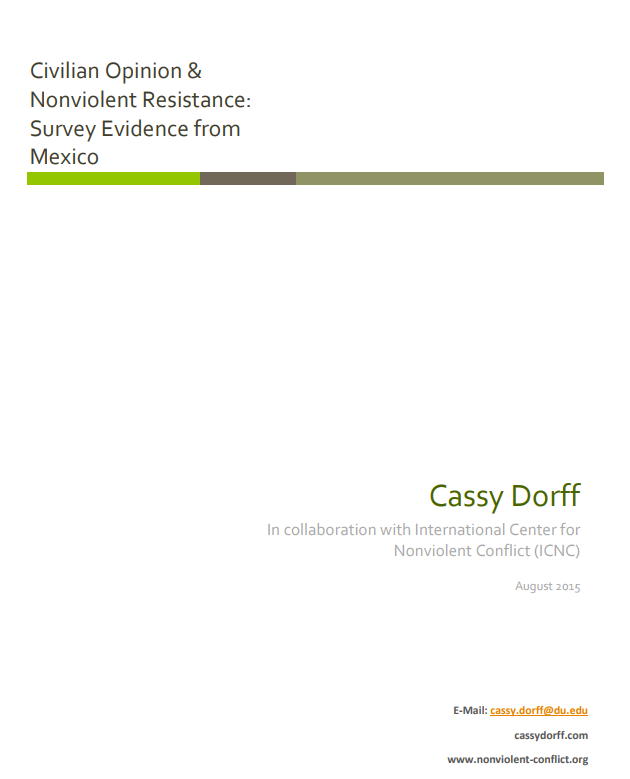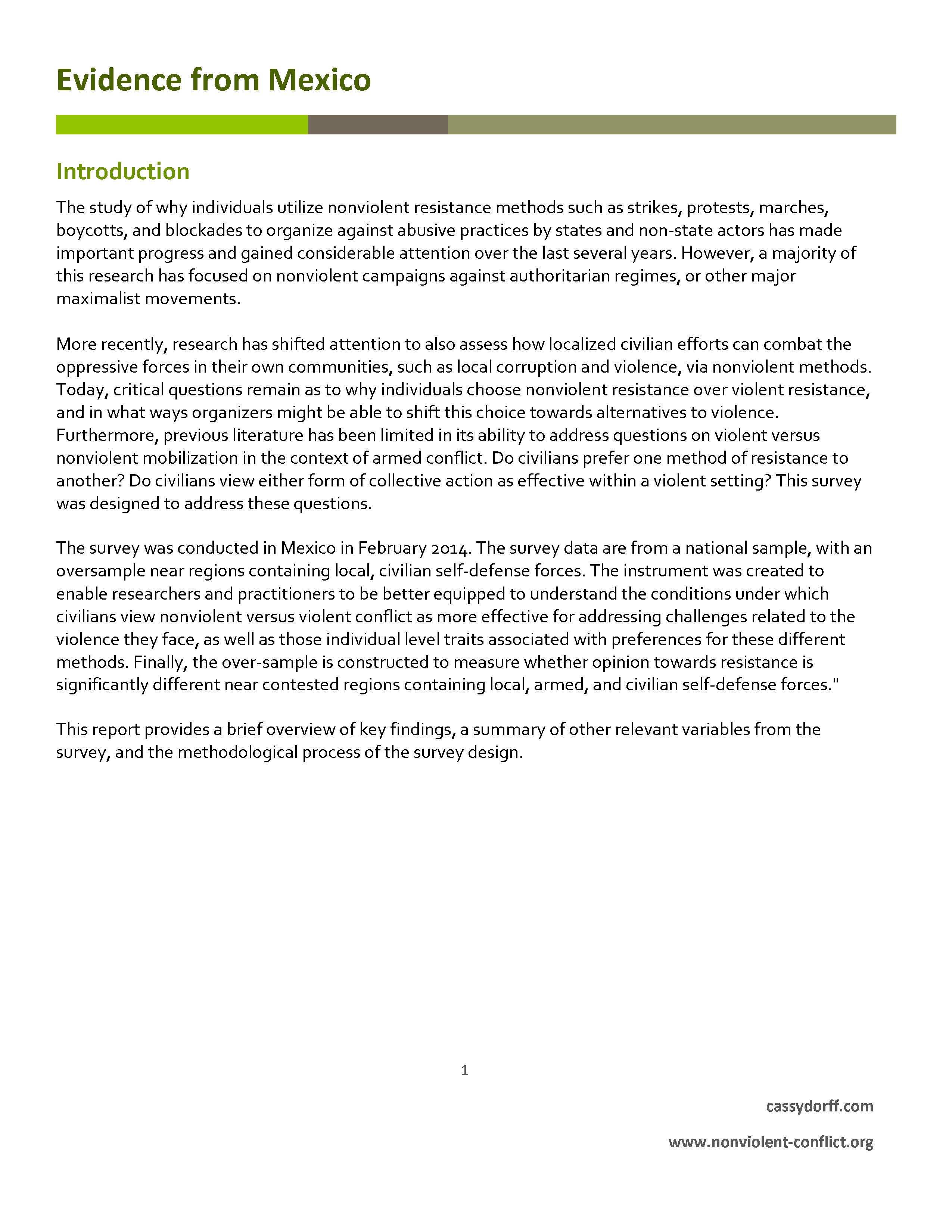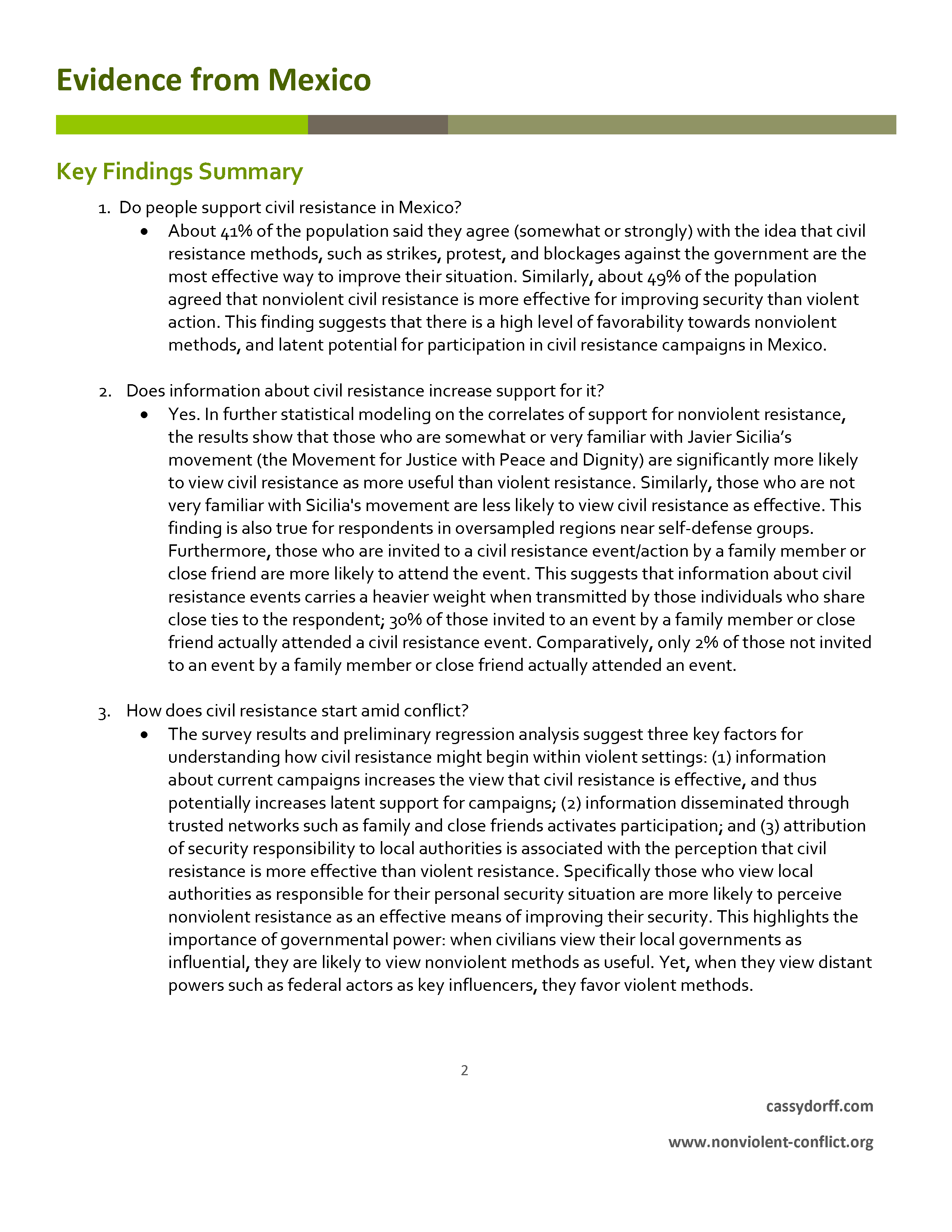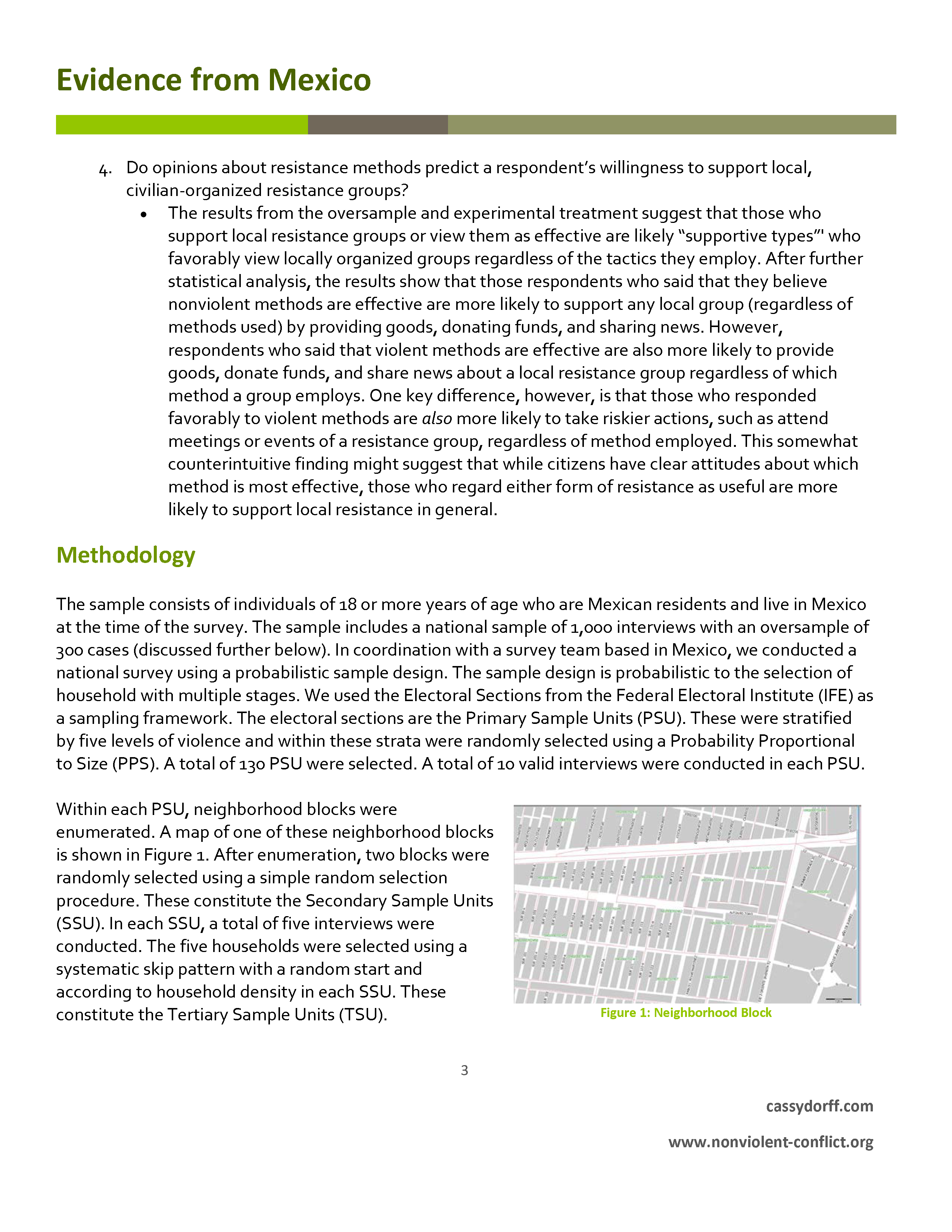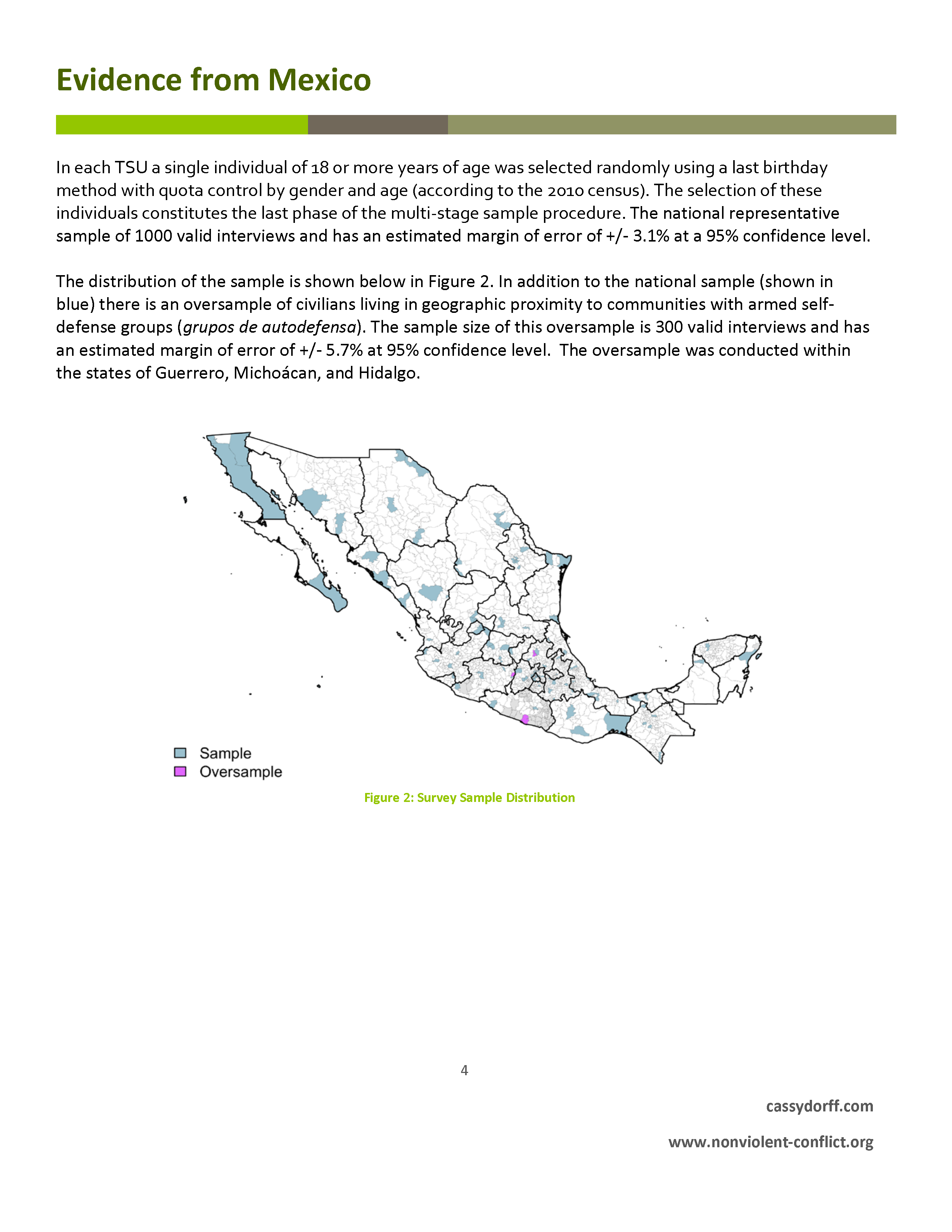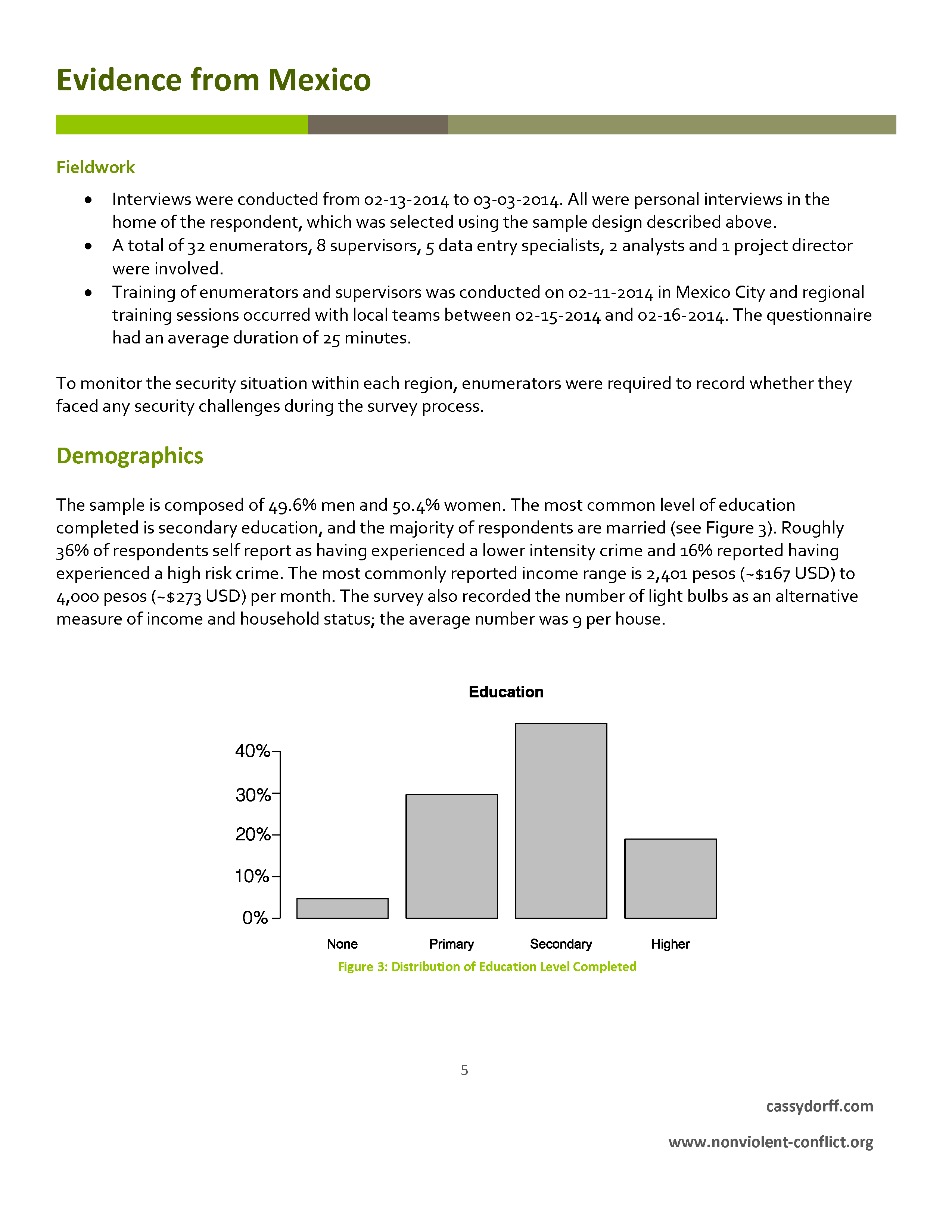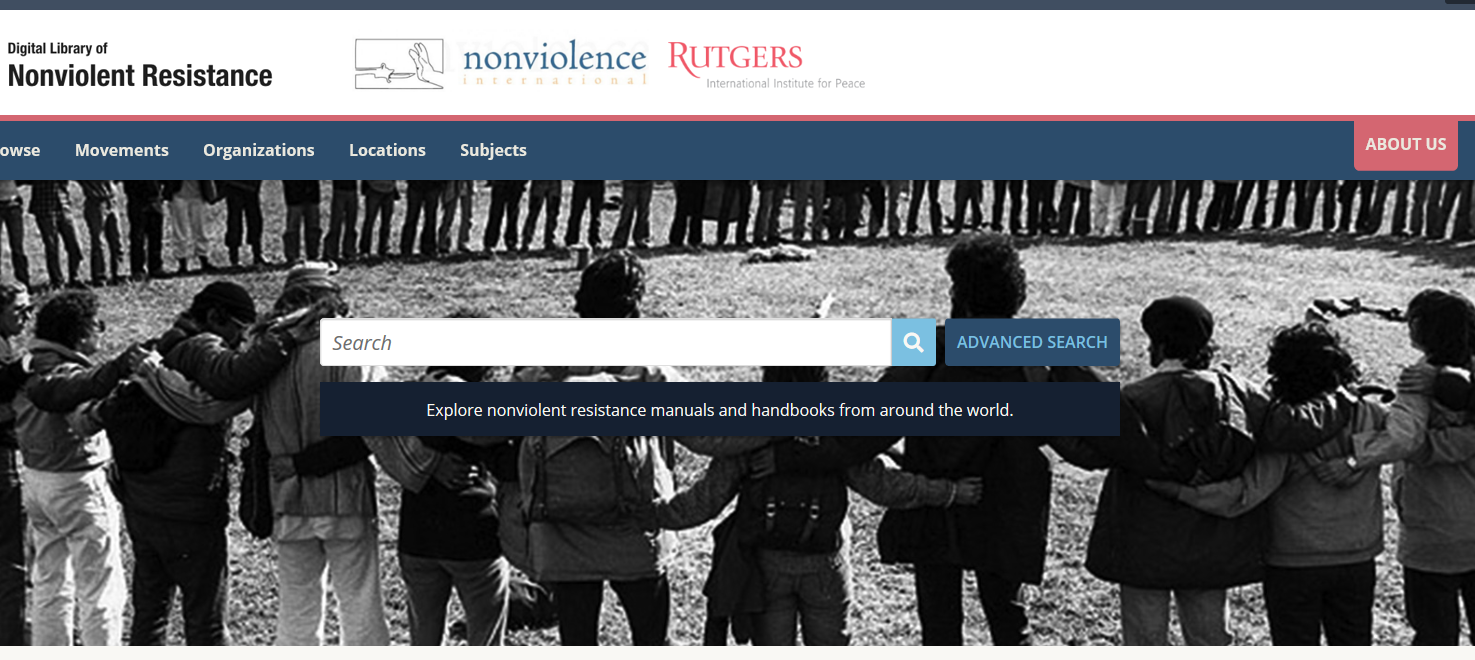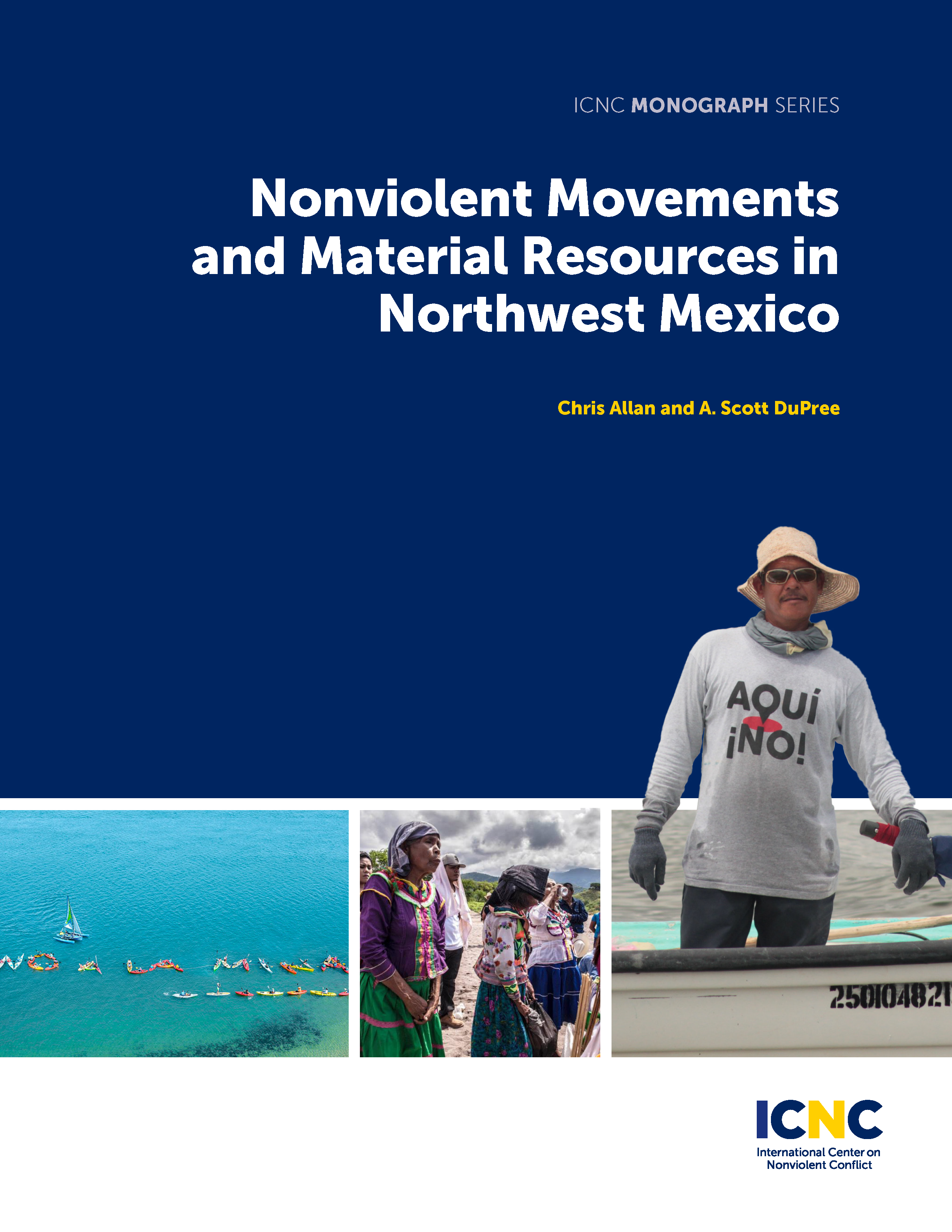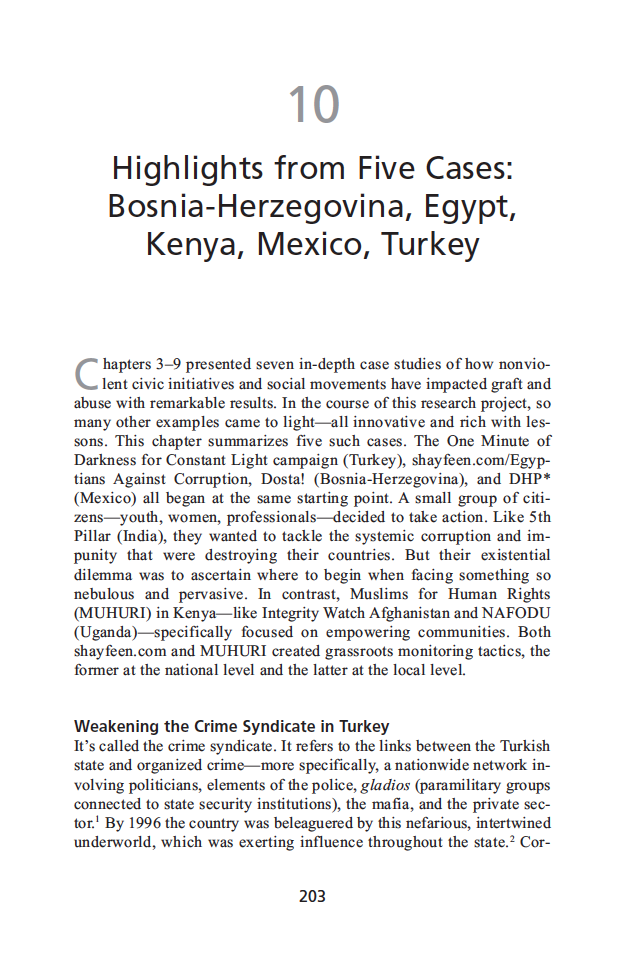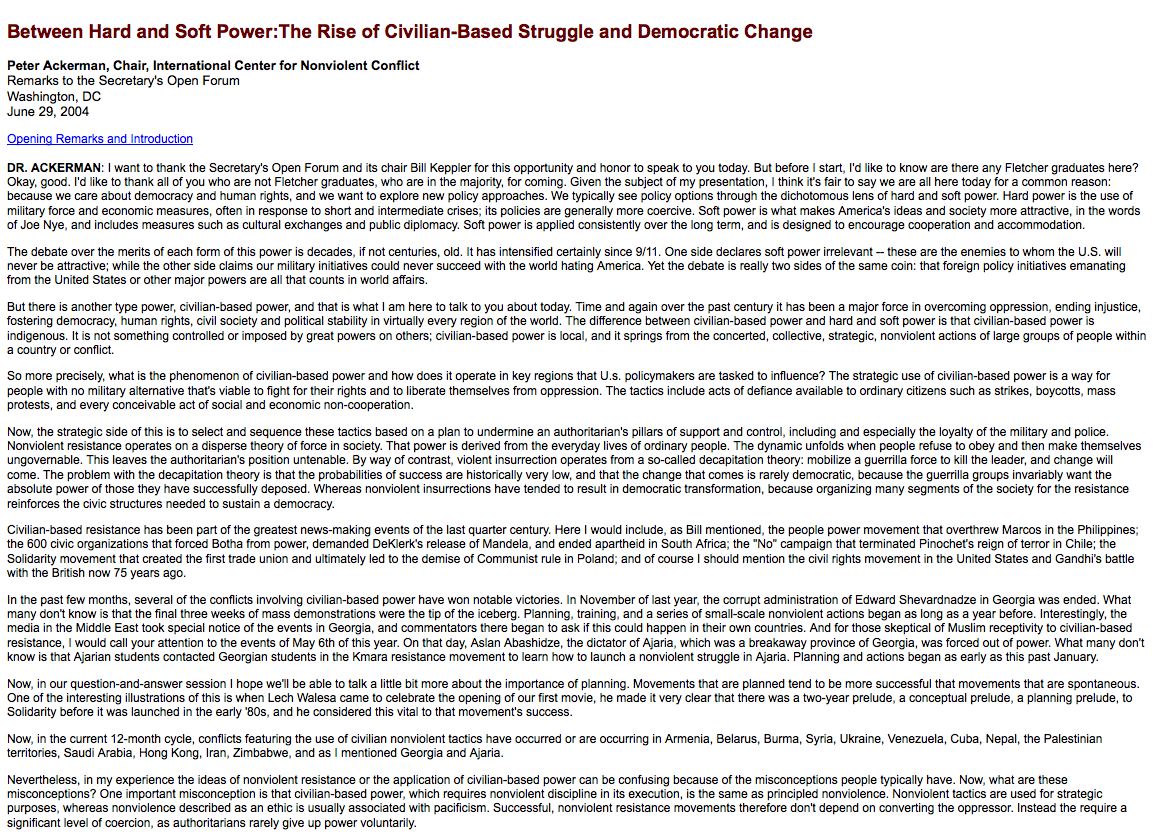Civilian Opinion & Nonviolent Resistance: Survey Evidence from Mexico
The study of why individuals utilize nonviolent resistance methods such as strikes, protests, marches, boycotts, and blockades to organize against abusive practices by states and non-state actors has made important progress and gained considerable attention over the last several years. However, a majority of this research has focused on nonviolent campaigns against authoritarian regimes, or other major maximalist movements.
More recently, research has shifted attention to also assess how localized civilian efforts can combat the oppressive forces in their own communities, such as local corruption and violence, via nonviolent methods. Today, critical questions remain as to why individuals choose nonviolent resistance over violent resistance, and in what ways organizers might be able to shift this choice towards alternatives to violence. Furthermore, previous literature has been limited in its ability to address questions on violent versus nonviolent mobilization in the context of armed conflict. Do civilians prefer one method of resistance to another? Do civilians view either form of collective action as effective within a violent setting? This survey was designed to address these questions.
The survey was conducted in Mexico in February 2014. The survey data are from a national sample, with an oversample near regions containing local, civilian self-defense forces. The instrument was created to enable researchers and practitioners to be better equipped to understand the conditions under which civilians view nonviolent versus violent conflict as more effective for addressing challenges related to the violence they face, as well as those individual level traits associated with preferences for these different methods. Finally, the over-sample is constructed to measure whether opinion towards resistance is significantly different near contested regions containing local, armed, and civilian self-defense forces.”
This report provides a brief overview of key findings, a summary of other relevant variables from the survey, and the methodological process of the survey design.
In collaboration with the International Center for Nonviolent Conflict (ICNC)
August 2015
